
Flag Day exists outside of Elementary school and it exists as a way to honor Ole Glory, the Star Spangled Banner herself. We’ve been known to celebrate D.C. Flag Day (June 14) and when looking into state flags, we determined certain state’s flag have our favorite thing incorporated: trees! While you may not be able to fly a state flag for D.C., you can certainly plant our official tree, the Scarlet Oak, our national tree, the Oak, or a whole host of other native trees for free through our Residential Planting program, RiverSmart Homes.
Now, onto the states:
Heavy Hitters
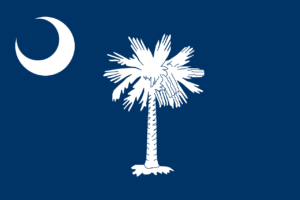 South Carolina
South Carolina
While South Carolina has had a flag in one way or another since 1775, the iconic palmetto flag was adopted in 1861. The palmetto was added on the flag in 1861, as a reference to Colonel Moultrie’s defense of Sullivan’s Island in Charleston; the fortress he’d constructed had survived largely because the palmettos, laid over sand walls, were able to withstand British cannon.
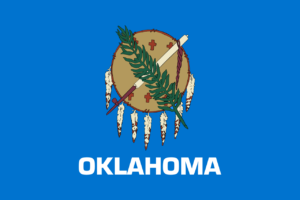 Oklahoma
Oklahoma
Olive trees might not be native to the US, but their branches (and symbolism) are featured heavily in many state flags. However, few feature them as prominently as Oklahoma’s state flag, adopted in 1924. It features a traditional Osage Nation buffalo-skin shield with seven eagle feathers on a Choctaw sky blue field. The shield is covered by two symbols of peace: a ceremonial pipe presenting Native Americans and olive branch representing European Americans.
Subtle Nods
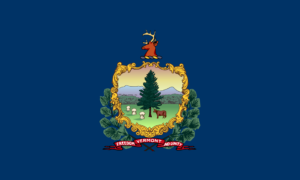 Vermont
Vermont
Considering they’re known as the Green Mountain State, it’s not surprising that their flag also heavily features a beloved pine tree. The state flag features the state coat of arms, which was designed by one of the founders of Vermont, Ira Allen, around 1807. A majestic pine tree stands in the center of the state coat of arms, surrounded by farmland and mountains. Bonus: underneath the “Vermonter’s Badge” lies two additional pine branches crossed between the sword and shield.
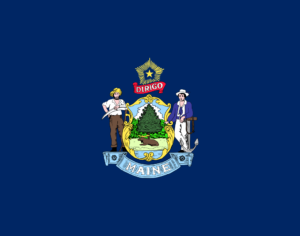 Maine
Maine
Remarkably similar to Vermont’s Flag, Maine’s state flag, adopted in 1909, features its State Seal on a blue background. The State Seal features a giant pine tree at the center, flanked by a moose, farmer, and a seaman. A fitting flag for the Pine Tree State.
Ok, Fine Maybe a Stretch
 North Dakota
North Dakota
It’s not the first official symbol present throughout the US that features an olive branch and it won’t be the last. Adopted officially by State legislation in 1911, the North Dakota state flag is almost an exact copy of the unit banner carried by the state’s troop contingent in the Philippine–American War in the early 1900s. It also resembles the Great Seal of the United States.
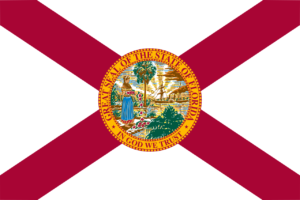 Florida
Florida
Many US state flags feature pine trees, but Florida is one of the few that features a native Sabal palm tree. Its state flag has a white background with a red saltire and, you guessed it, the State Seal. Designed in 1900, Florida’s state seal features a shoreline with a Seminole woman is spreading flowers, two Sabal palms, and a steamboat sailing into the horizon.
 Montana
Montana
Featuring its State Seal, the flag of Montana is simple and effective in letting you know what state it represents. The State Seal evolved from a basic design in 1864 and includes imagery of a plow, miner’s pick, shovel, mountains, rivers, that famous big sky and you guessed it: trees!
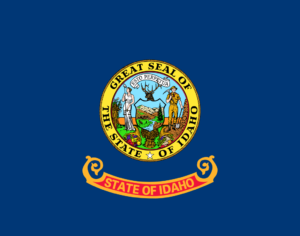 Idaho
Idaho
Yet another state whose flag is its State Seal on a blue background, the Idaho State Seal features a tiny pine tree to the right of center. The pine tree is meant to represent Idaho’s immense timber industry.

Honorable mention: Lebanon
While not a US state flag, the Lebanese flag is literally a giant Cedar tree, so we felt obliged to show it some love. Why a cedar? It’s directly inspired by the mountains of Lebanon cedar (Cedrus libani). The Cedar is a symbol of holiness, eternity and peace. As an emblem of longevity, the cedar of Lebanon has its origin in many biblical references.

